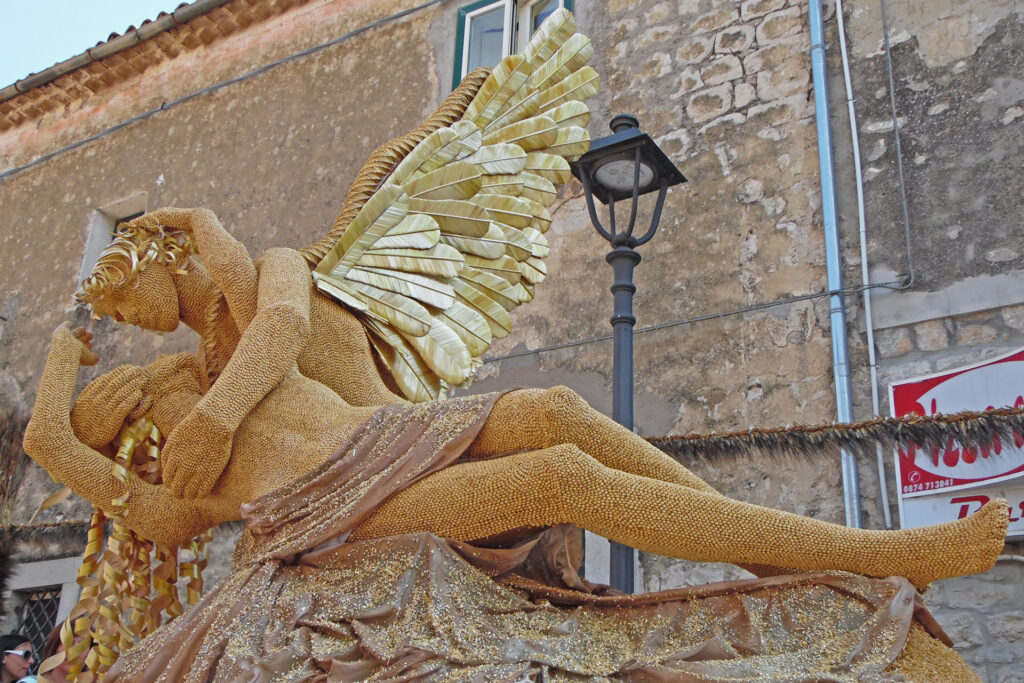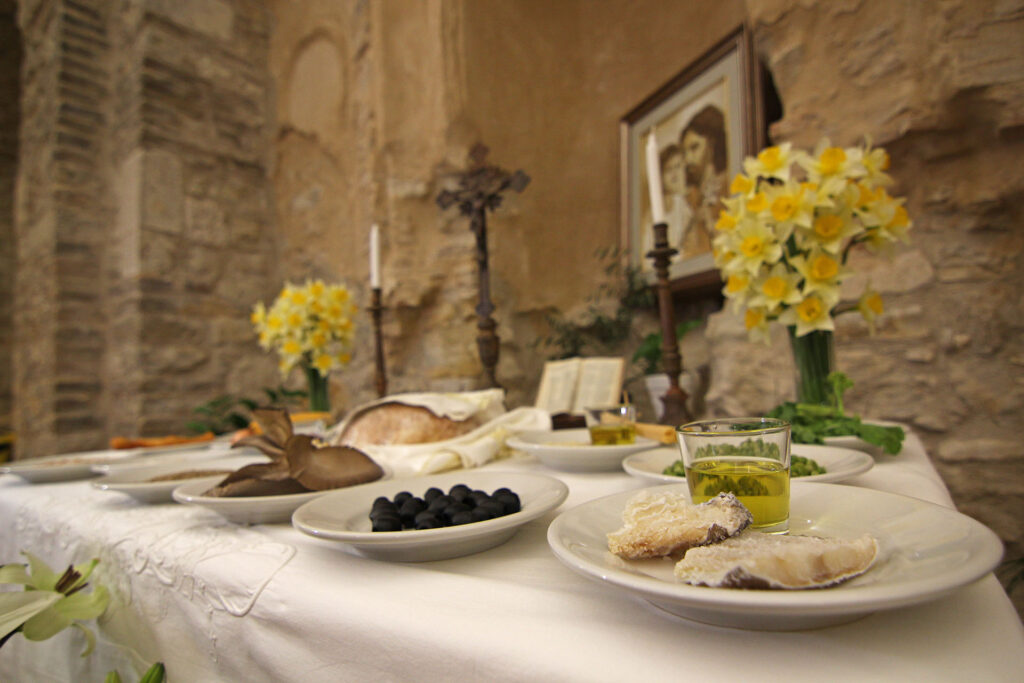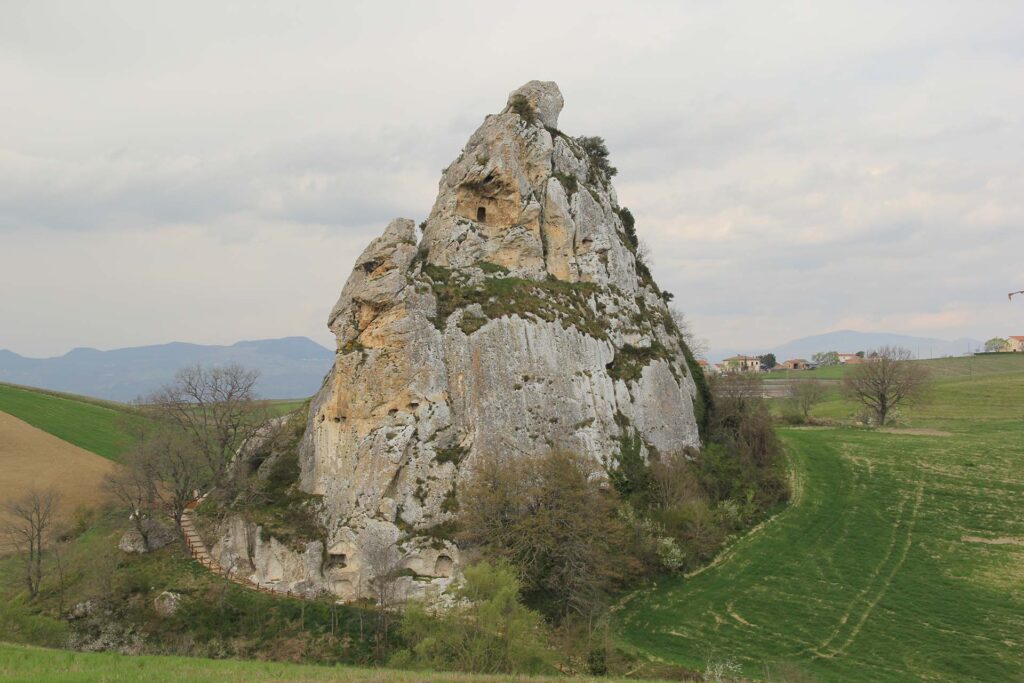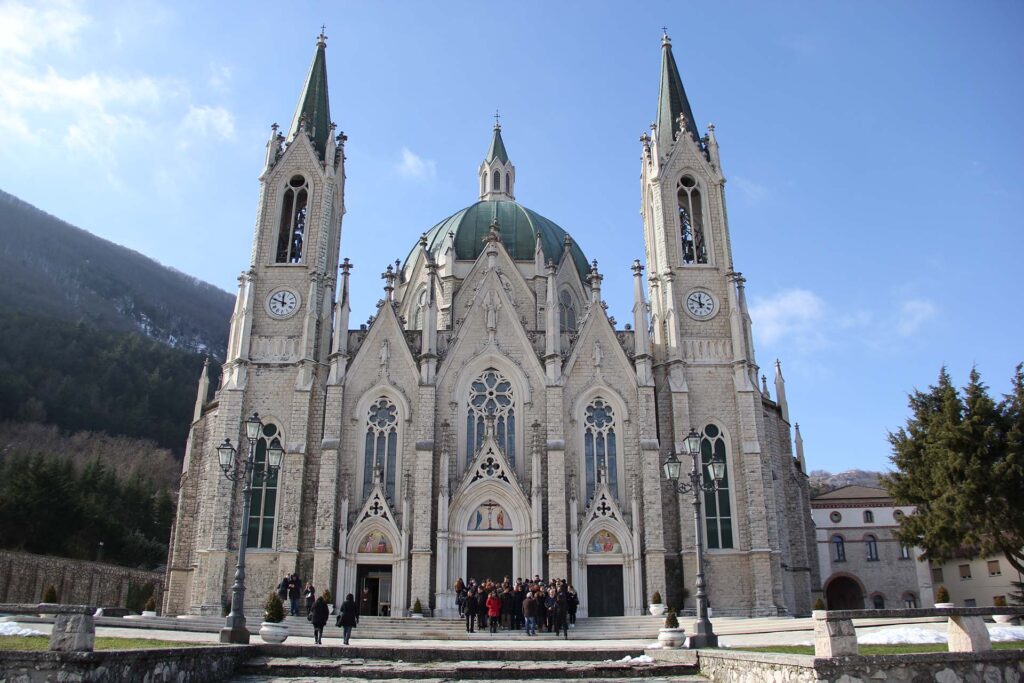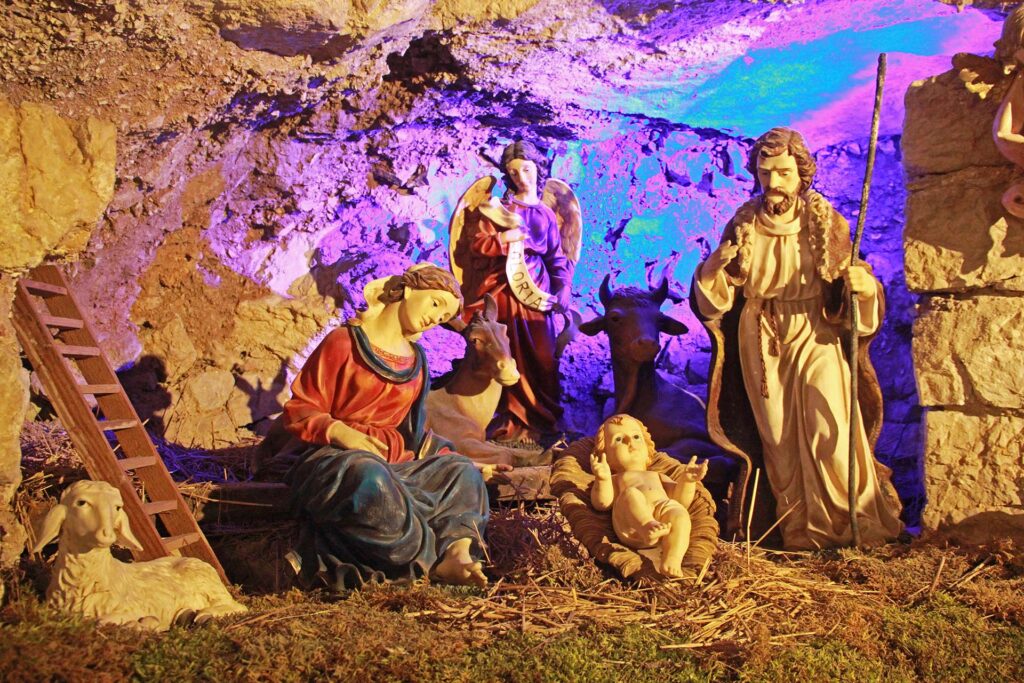The Feast of Wheat in honor of St. Anne
Can a grain of wheat express all the attachment of a population to a country, a Saint and a tradition? The Wheat Festival in honor of St. Anne in Jelsi is this and much more.
It was July 26, 1805, when an earthquake with an epicenter in the Matese Mountains devastated most of the towns of Molise causing extensive damage and thousands of deaths. Jelsi, miraculously escaped total destruction, counted far less damage than neighboring towns and far fewer casualties. The populace cried out for a miracle by invoking the saint of the day, namely, St. Anne herself.
From that day on, therefore, the inhabitants decided every July 26 to give to the saint what was most precious to them. Wheat, from this point of view, represented the perfect element since it was the same color and, at the time, almost the same value as gold for most people.
The tradition of the Grain Festival in honor of St. Anne, therefore, originated in this way.
The desire to thank the Saint for the miracle received, being able to quickly resume everyday life albeit with the memory, fear and sorrow for the people who had lost their lives.
As the years have passed, the festival has grown bigger and bigger and more and more heartfelt to the point that it has become one of the most anticipated festivals in the entire region. Numerous tourists come from outside the region, but even more so are Molisians, and Jelsese in particular, who have moved abroad and return to take part in the tradition.
Preparations begin as early as a month before the festival.
It starts, of course, with the grain harvest. This will be used for both the making of the traglie and the making of floats, decorations and streamers.
Traglie are a symbolic element of tradition: wooden sleighs, pulled by donkeys, mules, oxen or cows, which were used to transport sheaves of grain.
The wagons came later, when the tradition grew and took on significance not only for Jelsi but for the entire region.
These, made in garages by different groups, are covered with ears of corn and, most importantly, meticulously treated and glued grains of wheat one by one. Painstaking work, a sign of the devotion and gratitude to St. Anne.
Braids, on the other hand, just as the name implies, are ears of wheat intertwined with each other. With these are made the streamers then hung on balconies and lampposts to decorate the village.
July 26 in Jelsi is a big party!
It starts in the morning with the blessing of floats and traglie, which then move around the village. After being admired in all their beauty, they set off for the procession, which amid faith, tradition, innovation and a few witty touches unfolds along the main street until late morning. The celebration then continues in the evening with music and performances to cheer the many people who flock each year.
A heartfelt tradition that fully appreciates the country’s identity around wheat and the Saint. So much so that just outside the village, the MUFEG, Community Museum of the Grain Festival, was born, which is dedicated not only to enhancing the festival but also to carrying on the tradition with themed workshops and activities.
